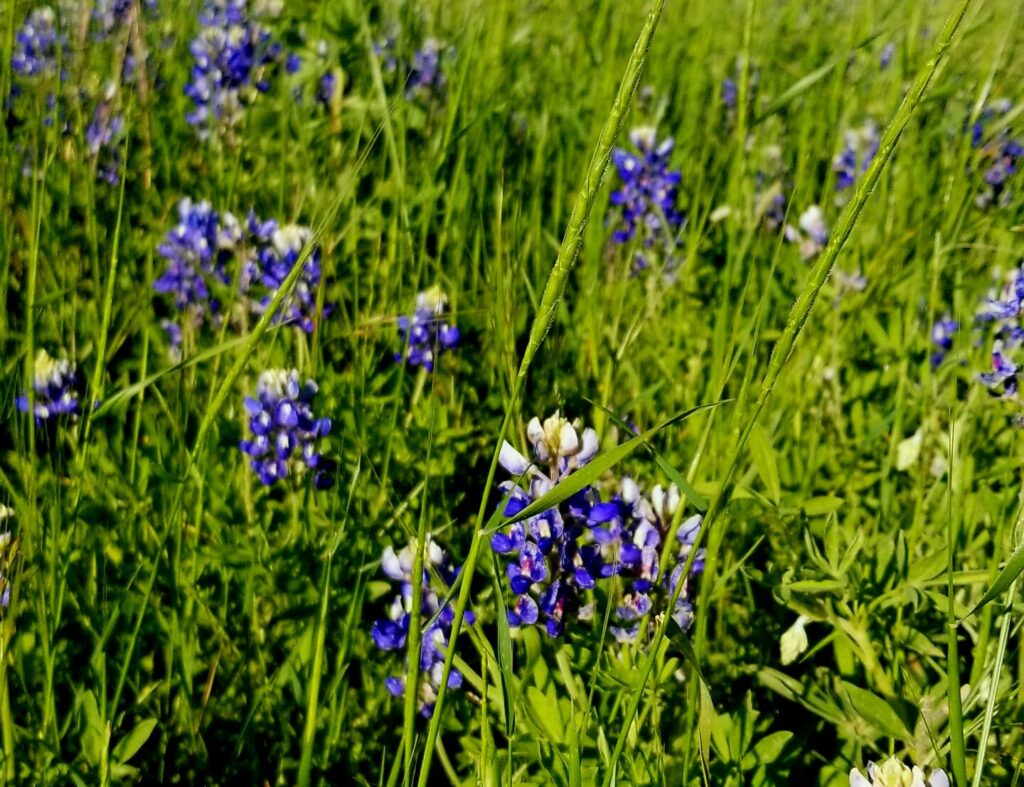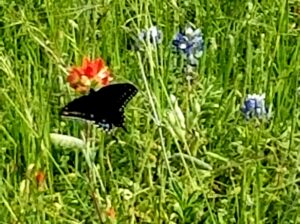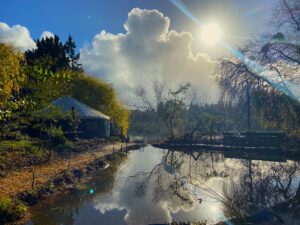Perspectives
Restoring Native Plants and Pollinators

High Hope Ranch Joins Pollinator Study

Lead Project Technician, Michael Caballero, establishing new research sites at High Hope Ranch in May.
High Hope Ranch was recently selected to become the latest study site for the Texas Pollinator Restoration Project! The Texas Pollinator Restoration Project is an ongoing, long-term study of the effects of land management on plants and pollinators in Central and North-Central Texas. Managed as a multi-institution collaboration between the Jha lab at the University of Texas, the Lichtenberg lab at the University of Northern Texas, and the Lady Bird Johnson Wildflower Center, the project was created in 2017 to test the efficacy of two restoration actions for pollinators, prescribed burning and seeding, that have been recommended by the Texas Parks and Wildlife Department. To examine the effects of these management methods, three restoration treatments were established (5-acre burn, 5-acre burn with seeded prairie plants, and 50-acre burn) and one untreated control plot within each of 10 working landscapes across private, state, and federal rangelands. Other project partners include the Cross Timbers Wildlife Management Area, Texas Parks and Wildlife, the Army Corps of Engineers, and various private landowners.
Since inception and the first prescribed treatments, plants, pollinators, and environmental conditions across a series of sites have been monitored and inventoried to better understand how land management affects grassland communities. The data gathered to date have given considerable insight into plant population dynamics, pollinator community response to habitat characteristics, and plant-pollinator interactions across restored landscapes. Now, 6 years into the project, additional sites such as High Hope are being added and the project extended for several more years so that researchers and land stewards can continue to gain valuable knowledge about pollinator community recovery over the long term.

Black Swallowtail butterfly (Papilio polyxenes) at High Hope Ranch.
For more information visit the Jha Lab website at, The Jha Lab | Conservation Biology – Landscape Genetics – Agroecology – Plant-Animal Interactions (utexas.edu, and the Lady Bird Johnson Wildflower Center website at, Prescribed Fire Research – Lady Bird Johnson Wildflower Center.


